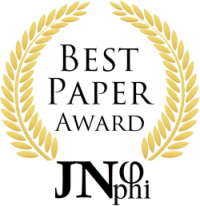The Modular with Feedback: Theory of Free Will
Abstract
In this theoretical article, I propose free will to be compatible, not with determinism, but with chance. This paper provides a neurological model of how free will emerges from oscillating neuronal activity, in modules. These, representing ideas, oscillate subconsciously, competing for conscious attention; choice between them is partly random. The modules seek to maintain, homeostatically, a sense of context and consistency; and a conscious desire for a sense of character and personality. I propose that they learn from experience, using feedback to rebalance, so that decisions conform to our desired will. This applies to "snap" decisions, but also to our moral core. Particular experiences influence our future moral judgments such that we accept responsibility for our generally but not entirely predictable decisions. The model explains will power, pathologies (i.e., addiction, “ego-depletion”) and links free will to creativity and humor. The Modular with Feedback theory of free will grants us freedom through a plastic control the uncertainty of which isn’t understood, but which is sufficient to preclude determinism.
Keywords:
Free Will, Modular, Feedback, Inverse compatibilism, Plastic controlDownloads
Metrics
References
Bode S, Murawski C, Soon CS, Bode P, Stahl J, Smith PJ. Demystifying “free will”: the role of contextual information and evidence accumulation for predictive brain activity. Neurosci Biobehav Rev. 2014;47:636–645.
Bouchard TJ Jr, Lykken DT, McGue M, Segal NL, Tellegen A. Sources of human psychological differences: The Minnesota study of twins reared apart. Science. 1990;250(4978):223–228.
Bucella A, Dominik T. Free will is only an illusion if you are, too. Scientific American. 2023. Accessed January 18, 2023.
Chopra D. Do you really have free will? Deepak Chopra Medium. 2024. Accessed May 9, 2024.
Compton AH. The Freedom of Man. Yale University Press; 1935.
Downloads
Published
How to Cite
License
Copyright (c) 2024 Peter Lugten

This work is licensed under a Creative Commons Attribution-NonCommercial-ShareAlike 4.0 International License.
Authors continue to hold copyright with no restrictions.














